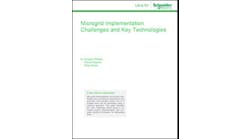If you thought that politicizing the light bulb was over, think again. Congress included a rider in this week’s $1.1 trillion budget deal that undercuts light bulb standards.
The rider would block the Department of Energy from enforcing the standards – which did not originate with President Barack Obama, as some mistakenly believe, but in fact harken back to President George W. Bush in 2007.
The law has led to a phase out of the inefficient incandescent. Apparently, certain consumers are deeply attached to these light bulbs – although this ardor didn’t show itself until Congresswoman Michele Bachmann made the light bulb a political issue.
The latest hubbub won’t accomplish what its sponsors hope. The rider would not bring back store shelves lined with old-fashioned, inefficient light bulbs. That train has already left the station, according to Steven Nadel, executive director of the American Council for an Energy-Efficient Economy.
“U.S. manufacturers such as GE, Philips, and Sylvania have complied with the standards and consumers are already reaping the savings from the more efficient bulbs,” Nadel said in a statement. “New halogen incandescents, now on store shelves, look and light up just like the old light bulbs but use about 30 percent less electricity. LED and CFL light bulbs save even more.”
Kateri Callahan, president of the Alliance to Save Energy, voiced a similar opinion.
“Thankfully American manufacturers already support these new rules and have innovated and invested right here in America to make better light bulbs, so this short-sighted proposal will not prevent U.S. consumers from cashing-in on more efficient lighting,” she said.
But the rider could still create some unfortunate consequences.
Nadel said it jeopardizes jobs at retooled US lighting plants by opening the door to foreign lighting factories and importers “that would seek to sell substandard, energy-wasting bulbs, threatening US manufacturing and domestic jobs.”
There is another consideration here as well.
Those against the standards say that light bulb choice should be personal, a free market play. Government is robbing us of choice, they say. But they miss a crucial point.
Once you plug something into the electric grid, it’s no longer personal; it’s communal. We all pay for the wires, poles and other infrastructure that make up this grid – the costs are spread out among utility ratepayers. If we use more energy, we have to build and maintain more of this infrastructure and everybody pays more. If we use less energy, we build less of this infrastructure and everybody pays less. So the light bulb you choose affects not only the price you pay for energy, but also the price your neighbor pays.
ASE’s Callahan says the new light bulb standards would reduce U.S. energy bills by more than $10 billion a year. That’s a lot of money. It’s easy to see why as a society, it’s a choice we made back in 2007.





